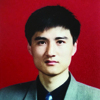Journal of Current Trends in Physics Research and Applications (JCTPRA)
Journal of Current Trends in Physics Research and Applications is a peer-reviewed open access international Journal that deals with all aspects of physics and related fields aiming to help physicists and physics scholars to learn about new developments outside in their related subfield.
Journal of Current Trends in Physics Research and Applications welcomes a wide range of submissions, including Original Research Articles, Review Articles, Mini Reviews, Rapid Communication, Opinions, and Editorials. Our journal provides a platform for Physicists, Scientists, Graduates, Post Graduates, Researchers from Physics, Astronomy, Engineering and Technology and from different fields of applied, pure and interdisciplinary physics to share their findings. We encourage authors to choose the format that best suits their research and communication objectives to effectively disseminate their findings.
All articles published in Journal of Current Trends in Physics Research and Applications are freely and permanently accessible online, ensuring immediate availability to readers worldwide. We believe in removing subscription charges and registration barriers, allowing unrestricted access to valuable research and fostering the global dissemination of knowledge.
Topics encompass a wide range and are not limited to the following:
Acoustic cloaking
Acoustic emission
Acoustic equivalent source methods
Acoustic impedance
Acoustic interferometer
Acoustic levitation
Acoustic microscope
Acoustic mine
Acoustic noise
Acoustic phonetics
Acoustic radiation pressure
Acoustic radiometer
Acoustic signal processing
Acoustic torpedo
Acoustic viscometer
Acoustical holography
Acoustical properties of nontraditional woods
Active noise control in vehicles
Active sound control
Aerodynamic sound
Air-coupled ultrasonic testing
Airport noise
Amplitude (wave motion)
Anechoic chamber
Architectural acoustics
Atmospheric acoustics
Attenuation
Bell
Binaural sound system
Bioacoustics, animal
Biomedical ultrasonics
Cavity resonator
Cochlear wave propagation
Compact disk
Computational aeroacoustics
Decibel
Digital ultrasonics for materials science
Directivity
Doppler effect
Ear protectors
Earphones
Echo
Echo sounder
Electret transducer
Fidelity
Focused sonic booms
Frequency (wave motion)
Fuzzy-structure acoustics
Harmonic (periodic phenomena)
Hearing aid
Helmholtz resonator
High-intensity focused ultrasound
Hydrophone
Hypersonic spectroscopy for materials characterization
Imaging mechanical defects
Infrasonic monitoring
Infrasound
Laser-ultrasonic cavitation
Loudness
Loudspeaker
Low-temperature acoustics
Magnetic recording
Masking of sound
Matched-field processing
Measurement of source-receiver motion with underwater sound
Medical ultrasonic tomography
Micromachined ultrasonic transducers
Microphone
Muffler
Musical acoustics
Musical instruments
Neuromusicology
Noise measurement
Nonlinear acoustics
Parametric array
Phonetics
Phononic crystals
Photoacoustic imaging in biomedicine
Photoacoustic spectroscopy
Physiological acoustics
Precedence effect (hearing)
Psychoacoustics
Quantum acoustics
Radiation
Reciprocity principle
Reflection of sound
Resonance (acoustics and mechanics)
Reverberation
Scale (music)
Siren (acoustics)
Sofar
Sonar
Sonic boom
Sonobuoy
Sonoelastography
Sonoluminescence
Sound
Sound absorption
Sound field enhancement
Sound intensity
Sound pressure
Sound recording
Sound-recording studio
Sound-reinforcement system
Sound-reproducing systems
Speech coder
Speech recognition
Spherical microphone arrays
Stereophonic sound
Sympathetic vibration
Text-to-speech systems
Thermoacoustic mixture separation
Thermoacoustics
Time-reversed signal processing
Tone (music and acoustics)
Tuning
Tuning fork
Ultrasonic aerosol concentration and positioning
Ultrasonic density measurement
Ultrasonic trapping of gases
Ultrasonic viscoelastic tissue measurements
Ultrasonics
Underwater acoustic pollution
Underwater acoustic scattering signature
Underwater noise
Underwater sound
Virtual acoustics
Voice response
Volume control systems
Volume unit (vu)
Wave (physics)
Wave motion
Editorial Board
Dr. Eliade Stefanescu
Advanced Studies in Physics Center of the Romanian Academy Academy of Romanian Scientists, Romania
Prof. Dr. Vladimir G. Chigrinov
The Hong Kong University of Science and Technology, Clear Water Bay, Hong Kong, China
Dr. Bahman Zohuri
Sandia National Laboratories Galaxy Advanced Engineering, USA
Prof. Dr. Jianqi Zhang
School of Materials Science & Metallurgical Engineering, Baotou, P. R. China
Prof. Dr. Shi-Hai Dong
Instituto Politécnico Nacional, Mexico
Dr. Abaysew Ayele
Innovation Technology Institute (ITI) Science and Technology Information Center (STIC), Ethiopian Biotechnology Institute (EBTi) Affiliated to Ministry of Science and Technology (MoST), Addis Ababa, Ethiopia.
Dr. Tom Mathews
Scientific Officer, Indira Gandhi Centre for Atomic Research, India
Prof. Dr. Marwa Bakour
Aleppo University, Aleppo, Syria
Dr. Manu Mitra
Department of Alumnus with Electrical Engineering, University of Bridgeport, USA
Guide For Authors
The Journal of Current Trends in Physics Research and Applications welcomes manuscript submissions for publication, adhering to the guidelines for the uniform requirements for manuscripts submitted to Journals. We encourage authors to follow these guidelines while preparing their manuscripts for submission.
Manuscripts submitted to the Journal should be original and not published or under consideration elsewhere. The acceptance of manuscripts is based on the recommendations of referees. Published papers become the exclusive property of Clinical Research and are subject to journal copyright.
You may submit manuscripts online at https://www.katalystpublishers.com/submit-manuscript or you may send the article as an email attachment to katalystpublishinggroup@gmail.com
Open Access Policy
Research papers published in both electronic and print versions are freely accessible for viewing, copying, and printing by individual academicians and researchers. We believe in open access to knowledge and encourage widespread dissemination of research findings to foster collaboration and progress in the academic community.
Disclaimer
The management of Journal of Current Trends in Physics Research and Applications disclaims any responsibility for the statements and opinions expressed by the authors in their articles. Reproduction of any material, in any form, is strictly prohibited without the explicit permission of the journal.
This manuscript presents original work that has not been published, in whole or in part, in any print or electronic media. It is also not under consideration for publication elsewhere, except as an abstract in conference proceedings.
Authors designated for this manuscript must fulfill the following criteria:
Preparation of Manuscripts
Manuscripts should be organized into the following sections: Title Page, Abstract, Introduction, Materials and Methods, Results/Observations, Discussion, Acknowledgments, References, Tables, Figures, and Legends. All manuscripts must be written in English and pages should be numbered consecutively, starting from the title page.
Please submit the original manuscript copy, including figures, to the editorial office online or as an email attachment to the provided email address.
If manuscripts have already been submitted via email, there is no need to send hard copies by mail.
Title Page:
The title page of the manuscript should include the full title, author(s) names, affiliation(s) with the institute where the work was conducted, running title, and contact details of the corresponding author. Additionally, include 3-8 keywords that highlight the main themes of the manuscript.
Abstract:
The abstract should provide a concise summary within a limit of 250 words. It should be written in complete sentences and present factual information to provide a comprehensive overview of the study.
Abbreviations:
Units of measurement should adhere to the prescribed abbreviations listed below: For other abbreviations and symbols, please refer to the recommended guidelines on units, symbols, and abbreviations provided in "A Guide for Biological and Medical Editors and Authors (The Royal Society of Medicine London 1977)."
Acknowledgment:
Grant details, Funding Details, etc should be included.
Conflict of Interest:
Conflict of interest must be included. If there is no conflict of interest, please add the following statement: “The authors have no conflict of financial interest.”
References:
At the end of the manuscript, include a comprehensive list of all references cited in the text. The referencing style should follow the Vancouver agreement. References should be numbered sequentially based on their first mention in the text, identified by Arabic numerals enclosed in square brackets. Authors are responsible for verifying the accuracy of all cited references, ensuring the inclusion of all authors.
Tables:
Tables should not be submitted as photographs or scanned documents. Number the tables consecutively based on their first mention in the text and provide a concise title for each table. Tables should be typed on separate sheets, and any explanatory details should be placed as footnotes. Use short or abbreviated headings for each column.
Figures:
List all figures together. Figures should be numbered and must not exceed the dimensions of 16.5 x 22.0 cm. For optimal reproduction, only high-quality drawings and original photographs are accepted. If possible, group multiple illustrations on a single page. Photomicrographs should include internal scale markers, and symbols, arrows, or letters used in the images should be clearly distinguishable from the background. Electronically submitted black and white half-tone and color illustrations should have a final resolution of 300 dpi after scaling, while line drawings require a resolution of 800-1200 dpi.
Article Processing Charge (APC):
Upon acceptance of an article for publication, the submitting author is responsible for the Article Processing Charges (APCs). These charges cover peer review, editorial services, production, and technology, ensuring high-quality publishing. APCs contribute to visibility through indexing, enable marketing efforts, and sustain the financial health of journals, fostering continued open-access availability.
Once the payment is processed, the journal does not issue refunds under any circumstances..
Galley Proofs:
Unless specified otherwise, galley proofs will be sent to the first-named author. Authors are kindly requested to review and return the galley proofs within 48 hours of receipt.
Reprints:
Reprints can be purchased upon request. To order reprints, please submit the request along with the corrected galley proofs. Please note that reprints are not provided free of charge. The Reprint Order Form and Price List will be included with the galley proofs.
Referees:
Typically, two experienced referees from our panel review submitted manuscripts. Contributors may suggest three qualified reviewers who are knowledgeable in the subject matter of the manuscript. However, these reviewers should not be affiliated with the same institution(s) as the contributors and should not have co-published manuscripts with the contributors in the past 10 years.
Ethics:
For experiments involving human subjects, please state whether the procedures adhered to the ethical standards set by the responsible committee on human experimentation (institutional or regional) and the Helsinki Declaration of 1975, revised in 2000. Avoid using patients' names, initials, or hospital numbers, especially in illustrative material. In the case of experiments on animals, indicate whether the institution's or a national research council's guidelines or any relevant national laws on the care and use of laboratory animals were followed.
Current Issue
Research Article
The Influences of Medication on Diabetes Control Using TIR Analysis GH-Method: Math-Physical Medicine)
Dr. Gerald C. Hsu
PDFResearch Article
Estimated Relative Energy Level of Four Different Finger PPG Ranges Using Wave Theory and Frequency Domain Analysis Using GH-Method: Math-physical Medicine
Dr. Gerald C. Hsu
PDFResearch Article
The Formation of Genetic Memory at Various Stages of the Evolution of the Earth
Dr. V. A. Dementiev
PDFShort Communication
The Application of Metal Carbon Mesocomposites for the Current Conductive Glues and Adhesive
Kodolov VI*, Kodolova-Chukhontseva VV and Yu V Pershin
PDF







